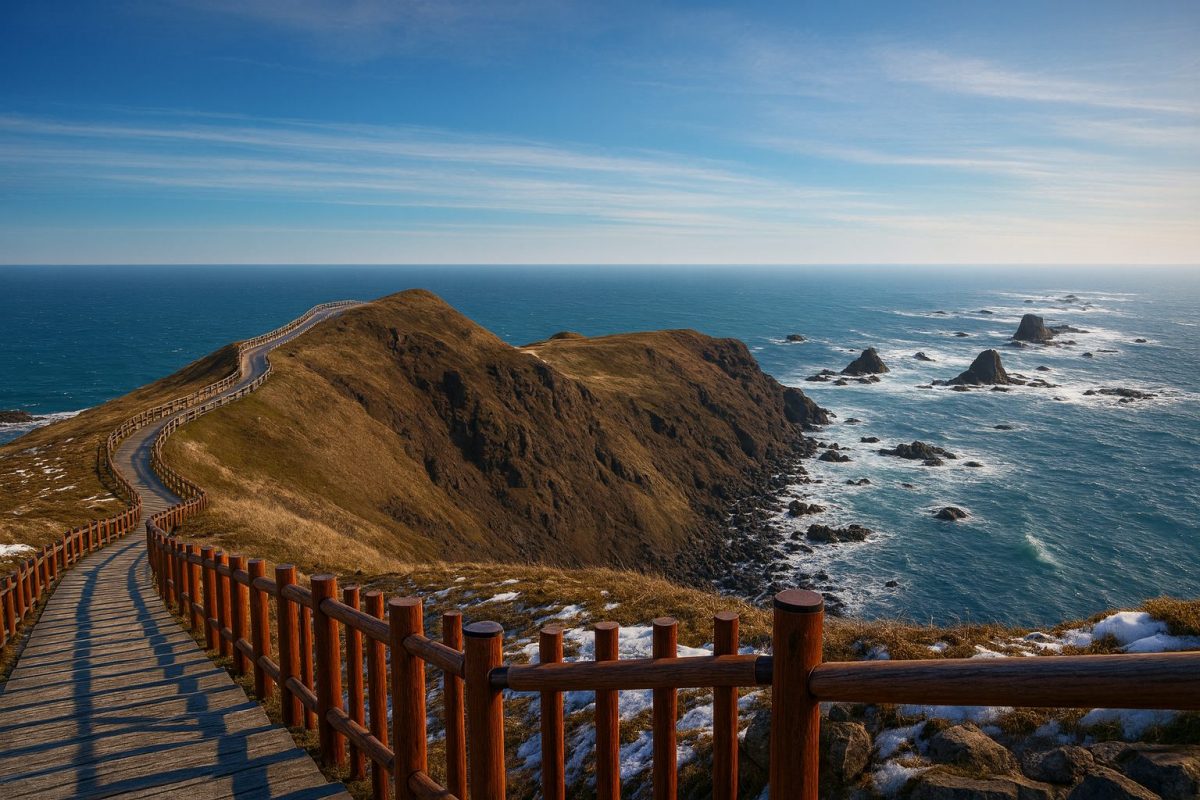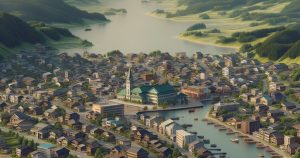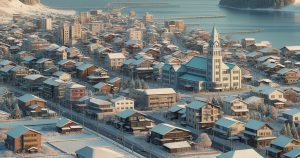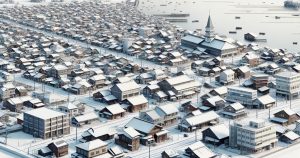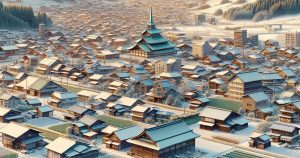| population | 3,961 people |
|---|---|
| area | 284 km² |
| population density | 13.9 peoples/km² |
Erimo Town, located in the southern part of Hokkaido at the eastern end of the Hidaka Mountains, is home to Cape Erimo, which juts out dramatically into the Pacific Ocean. Known since ancient times as the “Town of Wind,” this area has always been exposed to strong gales, yet its people have built their lives in harmony with such harsh natural conditions. The town’s name derives from the Ainu word “Enrumu” (cape), reflecting the history of the Ainu people who revered the sea and nature in their daily lives.
In the 1960s, the development of the fishing industry strongly supported the local economy and culture, with Hidaka kelp and other rich seafood gaining nationwide fame. Even today, fisheries, seafood processing, and tourism centered around Cape Erimo remain the core industries. Many visitors come to enjoy both the fresh bounty of the sea and the dynamic natural scenery.
Erimo Town is not merely a sightseeing destination but a place where you can truly experience the harmony between people and nature. The fierce winds and rough waves have shaped a unique landscape and culture, leaving a lasting impression on visitors. Distinctive Hokkaido dialect expressions are still part of everyday speech, and the warmth of the townspeople creates a welcoming atmosphere for travelers.
Culture and Traditions
The culture of Erimo Town is rooted in the traditions of the Ainu people and in a way of life centered around fishing. Ainu culture remains deeply connected to language, food, and spirituality, especially the belief known as “Kamuy,” which holds that deities inhabit all things in nature. Respect for the sea has always been strong, with prayers and rituals of gratitude performed before fishing, reflecting a worldview that values harmony between humans and nature.
During the Showa era, the fishing industry expanded rapidly, establishing the foundation of the town’s economy. The rich harvests from the sea became not only food but also the core of community life, strengthening ties among residents. Festivals such as the “Lighthouse Festival” and “Sea Urchin Festival” are still actively held today, expressing gratitude for both fisheries and nature.
The local language retains strong elements of the Hokkaido dialect, passed down through generations. Though unfamiliar to visitors, its distinctive sound adds to the cultural charm of the region. The locals are also known for their hospitality, making cultural exchange a memorable part of the experience.
Specialties
- Hidaka Kelp: A nationally renowned product known for its thickness and rich aroma. It produces a flavorful broth and is considered essential in Japanese cuisine. Kelp fishing is an important industry in the town and also a hallmark of summer.
- Salmon: Harvested in autumn with set nets, salmon is indispensable to local dining. In addition to fresh fillets, delicacies such as ikura (salmon roe) and dried salmon jerky are popular, often given as gifts.
- Sea Urchin: Fed by abundant seaweed, sea urchins here are known for their rich sweetness. During early summer, the “Erimo Sea Urchin Festival” attracts many tourists eager to enjoy freshly caught uni.
- Cold-dried Fish: Fish naturally dried by the severe winter winds are packed with umami and have excellent shelf life. This traditional technique has been passed down by generations of fishermen.
- Seafood Dishes: Local restaurants and inns serve a wide variety of seafood such as kelp, surf clams, and whelks. Among them, the seafood rice bowl topped with fresh seasonal catches is a must-try dish that delights every visitor.
Annual Events
- Erimo Lighthouse Festival: Held in summer around Cape Erimo Lighthouse, featuring music, dance, and food stalls. The stunning coastal setting makes the event especially memorable.
- Erimo Sea Urchin Festival: A popular early-summer event where visitors can taste fresh uni on the spot. Sea urchin rice bowls are particularly famous, often drawing long lines.
- Furusato Festival: The town’s largest autumn event, bringing together residents for product fairs, local stage performances, and community celebrations. It’s a rare chance to feel the entire town come together.
Access
- By Air: The nearest airport is New Chitose Airport. From there, it takes about three hours by rental car to reach Erimo Town.
- By Train: Erimo Town has no railway station. The former Hidaka Main Line toward Samani was discontinued, and access is now primarily by bus.
- By Car: The standard route is to drive south from Tomakomai along National Route 235, which takes roughly three hours. Scenic coastlines and pastures along the way make the drive itself enjoyable.
- By Bus: Direct buses operate from Sapporo, Tomakomai, and Shizunai, though service is limited. Checking timetables in advance is recommended.
Tourist Attractions
- Cape Erimo – One of Hokkaido’s most iconic scenic spots. The cape, shaped by strong winds and waves, offers breathtaking views of the Pacific Ocean.
- Cape Erimo Wind Museum – A well-known observation facility where visitors can experience simulated winds of up to 25 meters per second and learn about seabirds and seals in the area.
- Erimo Town Historical and Folklore Museum – Exhibits focusing on Ainu culture and the history of the fishing industry, offering insights into the region’s development.
Summary
Erimo Town is a place where the lives of its people remain deeply tied to the natural environment. From kelp, salmon, and sea urchins to its enduring traditions and the dramatic scenery of Cape Erimo, everything here leaves a lasting impression. The town is not only about sightseeing and gourmet dining but also about glimpsing the Ainu heritage and the lifestyle of a fishing community.
If you are traveling through Hokkaido, make sure to include Erimo Town in your itinerary. The unique experiences offered by this land of wind and sea are sure to stay with you long after your visit.
